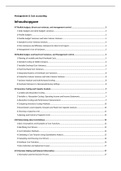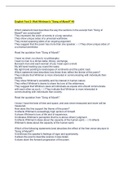Samenvatting
Management and cost accounting 1 samenvatting
- Vak
- Instelling
- Boek
Nederlandse samenvatting van hoofdstuk 7 t/m 11 van het boek Horngren's Cost Accounting. Deze samenvatting is gebruikt voor het vak management and cost accounting 1 op hogeschool Inholland.
[Meer zien]













